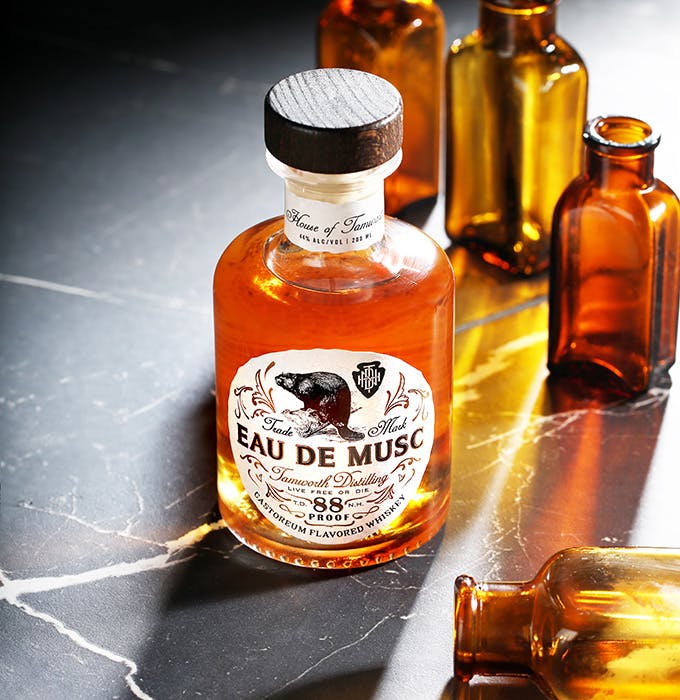Beaver-Flavored Whiskey From Tamworth Distilling
Despite what you're thinking, Eau de Musc is a surprisingly approachable spirit
We may receive a commission on purchases made from links.
If you thought Tabasco-infused whiskey was wacky, then wait until you check out this new beaver-flavored bourbon from Tamworth Distilling. The New Hampshire distillery's just-launched Eau de Musc ("water of musk"), incorporates castoreum, an oil obtained from the castor sacs of beavers.
"Everything we create is rooted in history," Steven Grasse, Tamworth's founder, says. "Whether it's distilling a new spirit and literally using the surrounding wilderness to inform the taste . . . or designing a brand inspired by an actual person or story, there has to be some thread that connects it to the past, or it doesn't feel authentic."
While researching his 2015 book, Colonial Spirits, Grasse discovered the use of castoreum, a natural flavoring agent the FDA still classifies as a safe food additive that also has a history of use in the perfume industry.
"During the research for the book is where I first became interested in using castoreum," Grasse recalls. "The castor sac excretion has bright, raspberry-fruit qualities and rich leathery notes along with a creamy vanilla aroma. These notes are very common among barrel-aged spirits, so it made sense to me to use it in one of our bourbons."
But, really, why beaver whiskey? "Why not?" Grasse counters. "Eighty years ago, castoreum was used in most vanilla, raspberry or strawberry ice creams and gum. The actual technique to extract the oil is difficult and expensive, which is why you don't see it used much today."

The distillery works with a professional trapper to source the castor sacs, and then uses the castoreum alongside a handful of additional flavors including birch oil, Canadian snakeroot, fir needles and raspberries to produce Eau de Musc. Grasse either steeps or uses a rotary evaporator to distill each ingredient before blending them together with a base of nearly three-year-old bourbon.
As for how it tastes, I should disclose that though I'm not actually familiar with the flavor of beaver, I'd say it's less "beavery" than I imagined. There's a faint musky aftertaste, though nothing overtly challenging or pungent. What is present is a combination of pine sap, cedar, vanilla pods and cloves on the nose, with oak, baking spices and dark chocolate on the palate—all with an oily, herbal undertone.
Gimmick or not, it's an approachable whiskey that shouldn't scare you away. "We set out to make a serious whiskey that connoisseurs would appreciate," Grasse says. "If you use too much, it will overpower the liquid, and we wanted to create a product that was unique, sophisticated and easy to drink."
Jake Emen is a food, drink and travel journalist living in San Diego. Follow his adventures on Twitter at @ManTalkFood.
